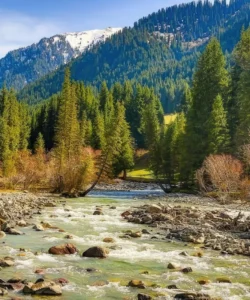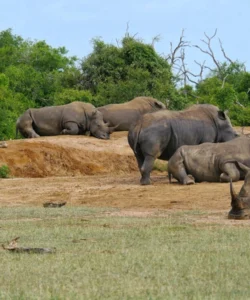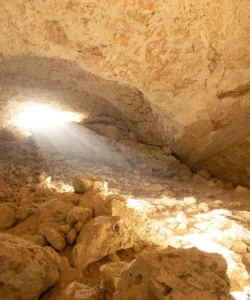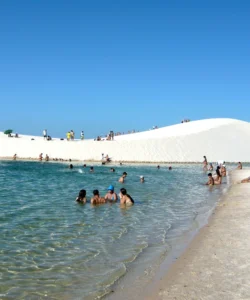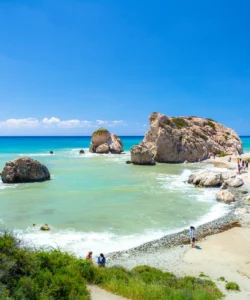Ha Long Bay (Vịnh Hạ Long, meaning “Descending Dragon Bay”) is one of Vietnam’s most iconic and breathtaking natural wonders, located in Quang Ninh Province, northeast Vietnam. This spectacular bay is renowned globally for its thousands of towering limestone karsts and islets, often covered in lush greenery, that majestically rise from the emerald waters of the Gulf of Tonkin. Designated a UNESCO World Heritage Site, Ha Long Bay is a place of ethereal beauty, mystical legends, and a living testament to nature’s artistry.
![]()
Name: Ha Long Bay (Vịnh Hạ Long)
Address: Halong City, Quang Ninh Province, Vietnam. The main departure points for cruises are Hon Gai Port and Tuan Chau International Passenger Port in Halong City.
How to get there:
Accessing Ha Long Bay is typically done via Halong City (or sometimes Cat Ba Island), with connections from Hanoi:
- From Hanoi (Most Common):
- By Limousine Van/Shuttle Bus: Many tour operators offer comfortable limousine van or shuttle bus services directly from hotels in Hanoi’s Old Quarter to the cruise ports in Halong City. This is the most popular and convenient option, taking about 2-2.5 hours via the new expressway.
- By Private Car/Taxi: Hiring a private car or taxi provides flexibility and takes a similar amount of time.
- By Train: A local train runs from Hanoi to Halong City, but it’s much slower (around 6-7 hours) and less comfortable than the bus/van.
- By Seaplane: For a luxurious and spectacular experience, seaplanes offer direct flights from Hanoi to Halong Bay, providing incredible aerial views.
- From Cat Ba Island: Ferries and speedboats connect Cat Ba Island (which is often part of a combined Ha Long Bay/Lan Ha Bay tour) to Halong City.
- From Halong City to Cruise: Once in Halong City, all visitors head to their designated cruise port (most commonly Tuan Chau Port) to embark on their chosen cruise.
Landscape and Architecture:
Ha Long Bay’s “architecture” is almost entirely natural, sculpted by geological forces over millions of years:
- Limestone Karsts and Islets: The defining feature of the bay is its estimated 1,600 to 2,000 towering limestone karsts and islets, rising dramatically from the sea. These are remnants of ancient, heavily eroded limestone plateaus. Many have unique shapes, some resembling animals (e.g., Fighting Cocks Islet) or human figures.
- Emerald Waters: The bay’s calm, often emerald-green waters provide a stunning contrast to the dark limestone. The water’s color is influenced by the high mineral content and shallow depths in many areas.
- Hidden Caves and Grottoes: Many of the karsts contain spectacular limestone caves and grottoes, adorned with stalactites and stalagmites. Popular examples include Sung Sot Cave (Surprise Cave), Dau Go Cave, and Thien Cung Cave.
- Floating Fishing Villages: Scattered throughout the bay are traditional floating fishing villages (e.g., Cua Van, Vung Vieng), where communities live on rafts and houseboats, adapted to the marine environment. Their simple, resilient structures form a unique human “architecture” on the water.
- Beaches and Lagoons: While not the primary draw, some islets feature small, secluded sandy beaches and hidden lagoons, perfect for kayaking or swimming.
- Lush Vegetation: Many of the limestone formations are covered in dense, subtropical vegetation, clinging to the vertical cliffs, adding to the bay’s verdant beauty.
- Junks and Cruise Boats: The bay is frequented by numerous traditional-style wooden junks and modern cruise ships, which, while man-made, have become an iconic part of the bay’s visual landscape. Their dark wood and traditional sails add to the aesthetic.
What makes it famous:
Ha Long Bay is famous for:
- UNESCO World Heritage Site: Designated for its outstanding universal value as a natural landscape, showcasing exceptional natural beauty and significant ongoing geological processes. It was also twice recognized as one of the New7Wonders of Nature.
- Spectacular Karst Landscape: Its unparalleled concentration of limestone karsts and islets, formed over millions of years, creates a unique and mystical seascape unlike anywhere else in the world.
- Emerald Green Waters: The distinctive color of its calm waters contributes significantly to its ethereal beauty.
- Caves and Grottoes: The stunning interiors of its numerous limestone caves, filled with dramatic formations, are a major draw.
- Traditional Floating Villages: These unique communities offer a glimpse into a traditional way of life intricately linked to the bay’s ecosystem.
- Cruising and Kayaking: It’s a premier destination for scenic cruises (from day trips to multi-night journeys) and kayaking among the islets, allowing for immersive exploration.
- Myth and Legend: The bay is steeped in Vietnamese folklore, particularly the legend of dragons descending from the sky to protect Vietnam, forming the islets with their jewels.
Differences from some other wonders:
Ha Long Bay distinguishes itself from other natural wonders, particularly other karst landscapes or coastal areas, in several key ways:
- Submerged Karst Towers: While other places have karsts (e.g., Guilin in China, Krabi in Thailand), Ha Long Bay is particularly renowned for its thousands of freestanding limestone towers rising directly from the sea, many of which are submerged at their base. This “drowned karst” topography is unique in its scale and density, creating an unparalleled seascape.
- Density and Concentration: The sheer number and density of the limestone islets packed into the bay’s relatively compact area create an incredibly dramatic and immersive visual experience, often feeling like navigating a maze of geological giants.
- Green-Water Contrast: The emerald green color of its calm, protected waters provides a striking and consistent contrast to the dark limestone, enhancing the ethereal beauty in a way that differs from clear blue ocean waters or silty river systems in other karst regions.
- Traditional Junk Boats as Part of the Aesthetic: The numerous traditional-style wooden junks and cruises that ply its waters have become an integral part of the bay’s iconic visual, contributing to its romantic and timeless image. This human element of traditional seafaring is deeply woven into the natural landscape.
- Legends of Dragons: The deep connection to Vietnamese dragon legends (Ha Long meaning “Descending Dragon”) adds a rich cultural and mythical layer to the natural beauty, making the landscape itself a character in ancient folklore.
- Combined Natural and Human Heritage (Floating Villages): While primarily a natural site, the presence of traditional floating fishing villages that have sustained communities for generations highlights a unique adaptation of human life to this specific marine environment, adding a living human heritage component.
In essence, Ha Long Bay is a magical and globally significant wonder, a breathtaking masterpiece of nature’s sculpture that offers an unforgettable journey through a seascape of ancient myths, dramatic geology, and serene emerald waters.



